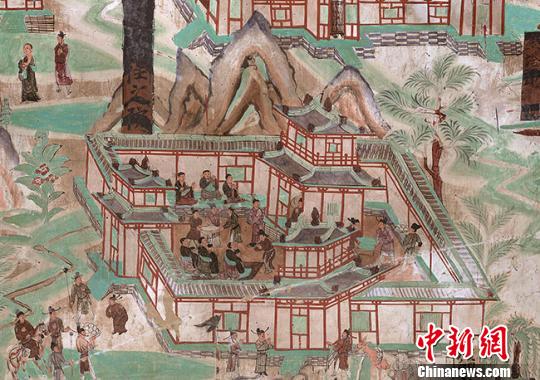 |
|
A mural from the Mogao Cave 61 shows a celebration scene at Wutai Mountain during Chongyang Festival. [Photo/Chinanews.com] |
The Dunhuang Research Academy has released a batch of Dunhuang murals showing the ancient folk scene of the Chongyang Festival, or Double Ninth Festival, which falls on Oct 28 this year.
The Chongyang Festival originated in the Warring States Period (475-221 BC) and is still celebrated today. To mark the festival, people usually climb heights, wear cornel twigs, enjoy chrysanthemum flowers, eat Double Ninth cake and drink chrysanthemum flower wine.
The Dunhuang murals portray scenes of ancient people partying, dancing, drinking, eating cakes, outing, climbing mountains, family gathering and respecting the elderly.
According to the Dunhuang Research Academy, during ancient times, people preferred to celebrate the Chongyang Festival in temples, and the temples were usually located at picturesque scenic spots, so they also enjoyed the outdoors and climbed heights. Climbing heights was not limited to climbing mountains, but also pavilions, temples and other structures.
Though China has marked Chongyang Festival as "a festival for the elderly" since 2012, the festival has a tradition of respecting old people since ancient times.
The Mogao Caves in Dunhuang of Gansu province, a sacred place of Buddha art, is noted for exquisite murals and sculptures. The ancient books earthed here record detailed festival traditions and folk customs in different historical periods.